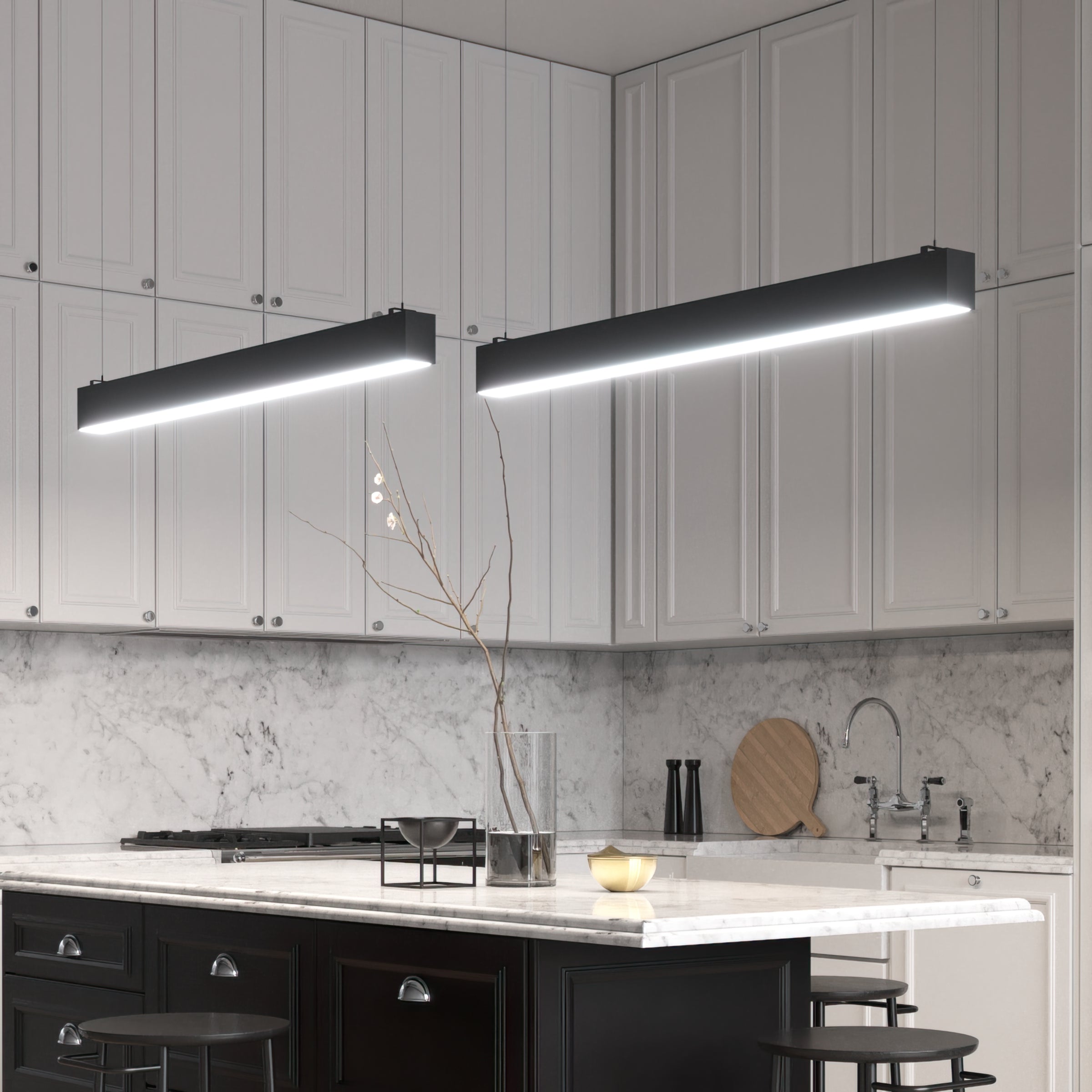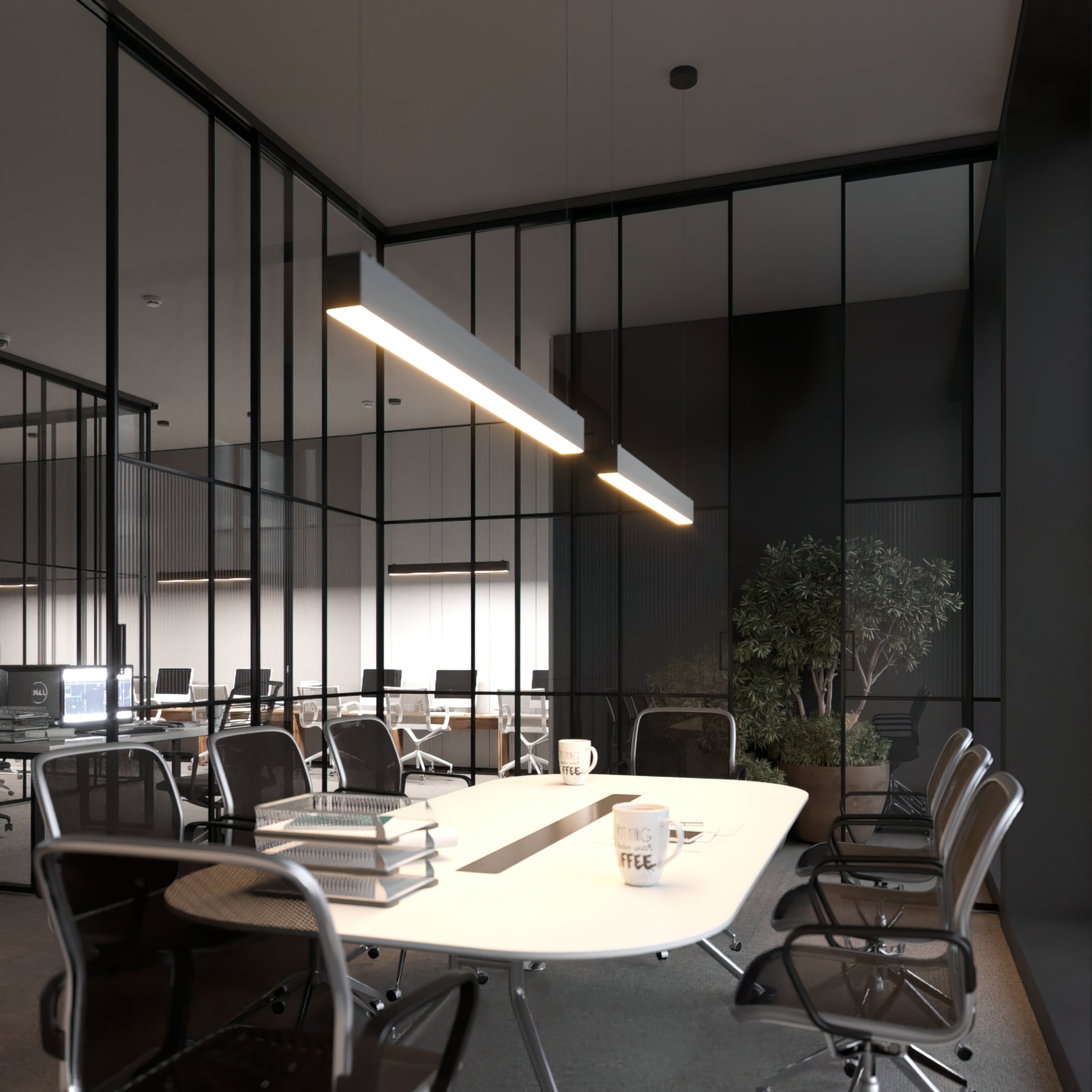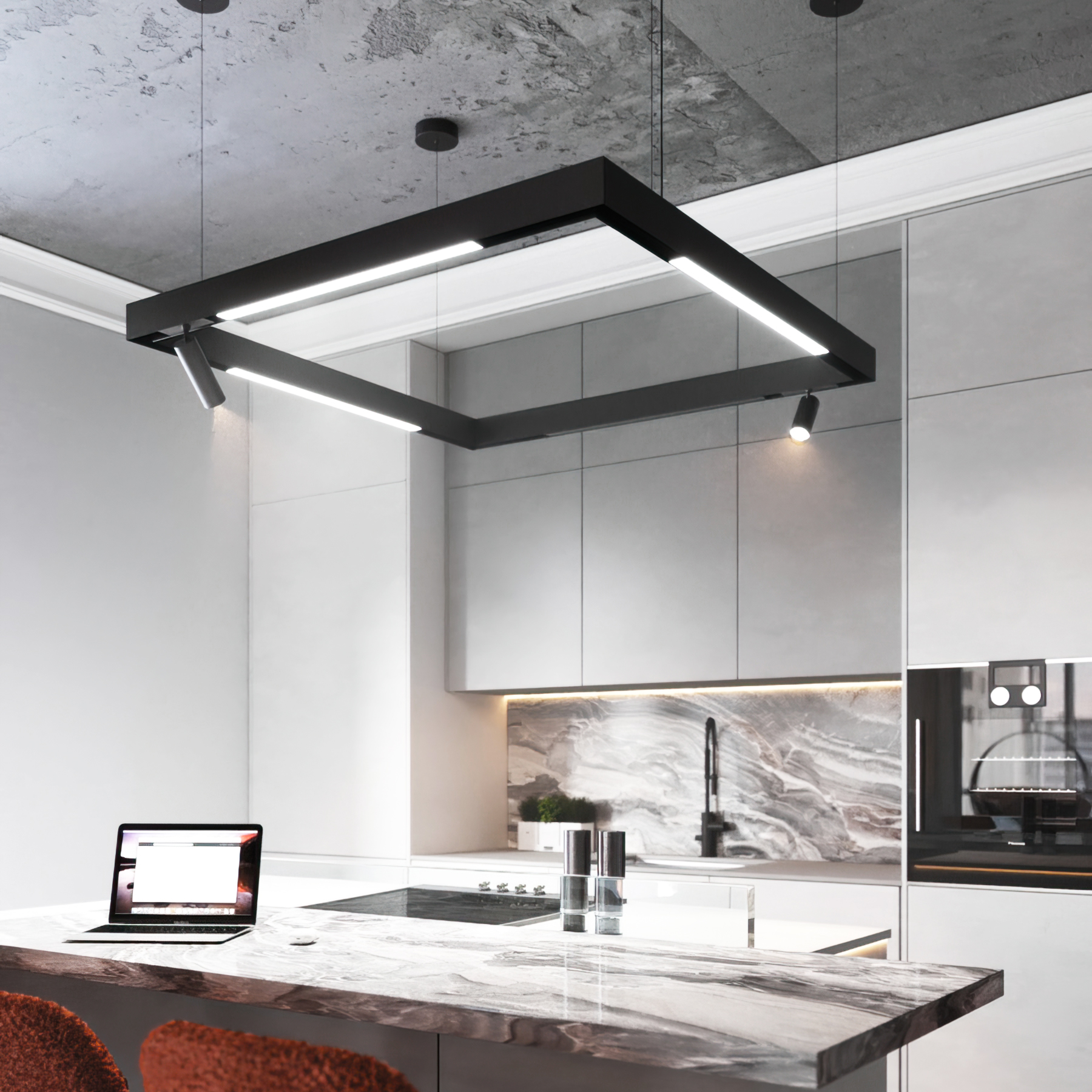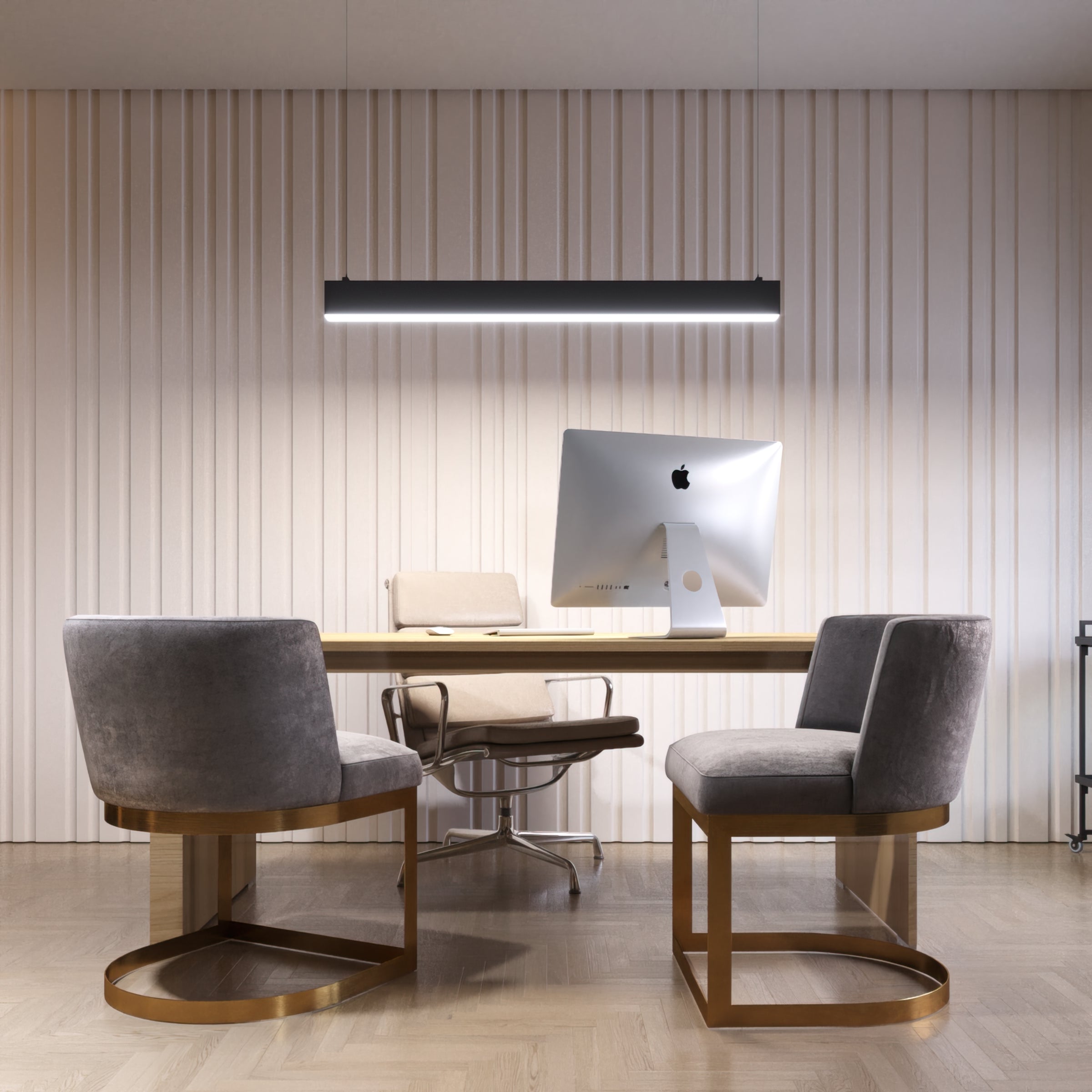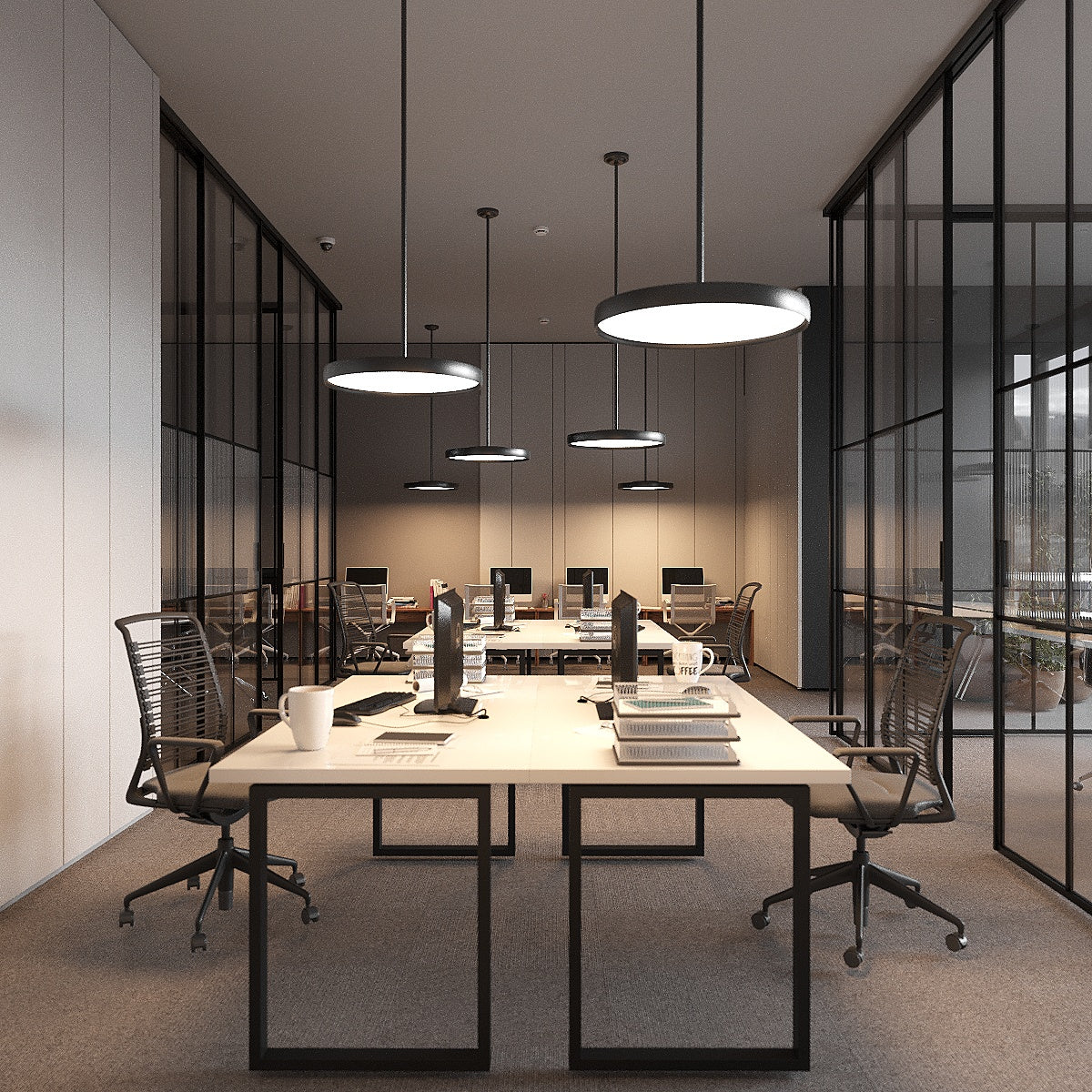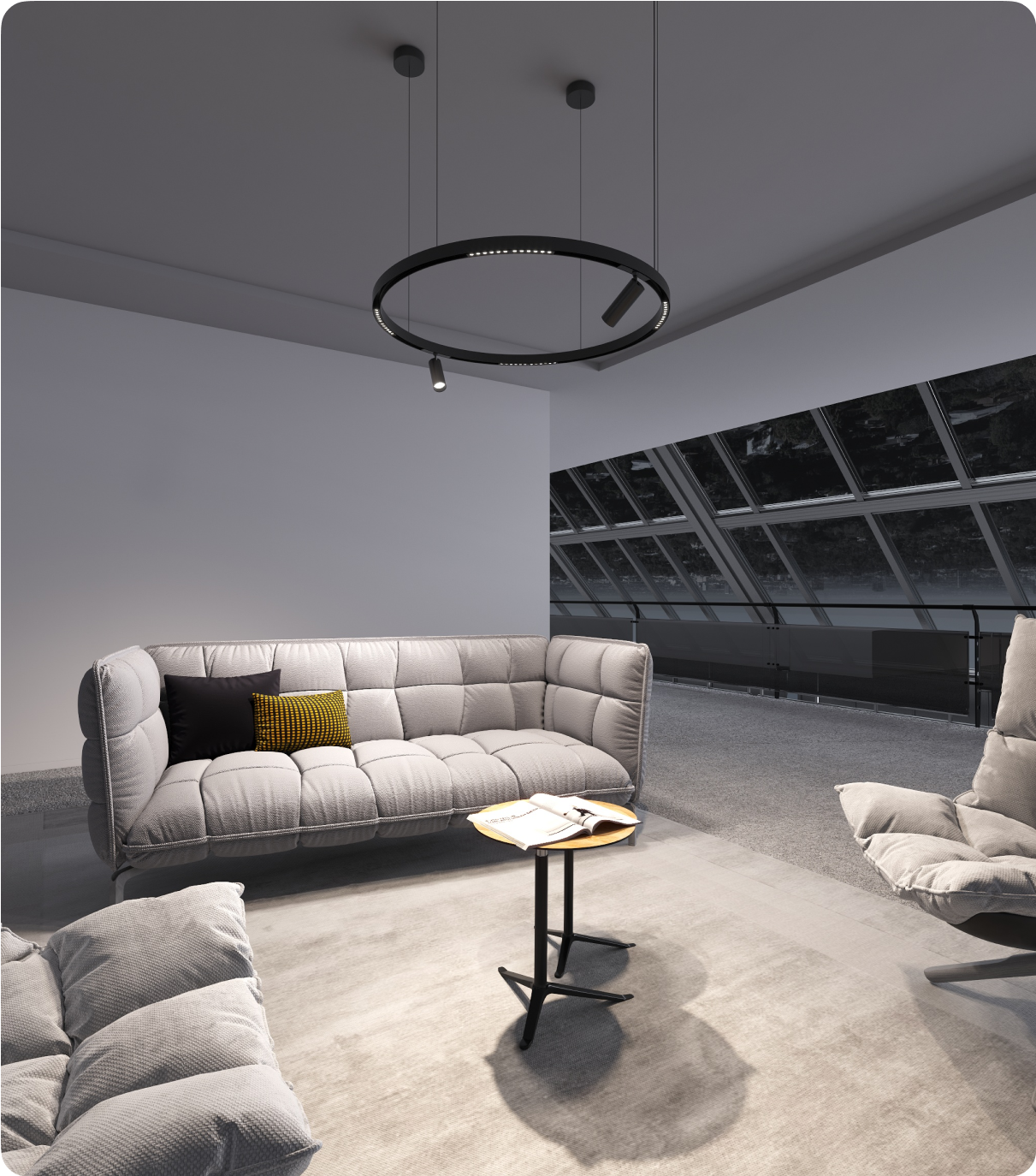As more people are working from home or in the office, it's important to design a workspace that promotes comfort and productivity. One crucial aspect of this is having proper lighting. The lack of adequate lighting can cause eye strain, headaches, and fatigue, which can negatively affect the performance of a worker. On the other hand, ergonomic lighting can improve concentration, reduce eye strain, and increase overall job satisfaction.
But what exactly is ergonomic lighting? Ergonomic lighting is the practice of designing lighting that is optimal for the human eye and promotes comfort and safety in the workplace. It involves considering factors such as the color temperature, brightness level, and the placement of the light sources. In this blog post, we will discuss how to make an ideal lighting design for office.
Why is Proper Lighting Important for Workplaces?
Proper lighting is crucial for workplaces as it affects the ease and quality of work tasks. People rely on their sense of sight for about 85% of the information they receive. Appropriate lighting, devoid of glare and shadows, can reduce eye fatigue and headaches while also making moving machinery and other safety hazards more visible. In addition, good quality lighting can decrease the likelihood of injuries resulting from "momentary blindness" caused by eyes adjusting to abrupt changes in brightness. The ability to focus on objects, as well as their size, brightness, and contrast with the surrounding background, are other factors that determine how well people can "see" at work. Ergonomic lighting is the practice of designing lighting that is optimal for the human eye and promotes comfort and safety in the workplace. By considering factors such as color temperature, brightness level, and light source placement, ergonomic lighting can enhance concentration, reduce eye strain, and increase overall job satisfaction.
Daylight VS Electric Lighting
Electric lighting is essential for workplaces that operate during non-daylight hours or where natural light is not sufficient. However, daylight is full-spectrum lighting that mimics the sun's natural light and has a color temperature of around 5000K and a high color rendering index (CRI) of 90 or above. Сolors look more vibrant and true to life under daylight, making it easier to distinguish between colors and details, reducing eye strain, and improving visual acuity. Daylight also provides a natural contrast between light and dark, which helps reduce glare and shadows. Electric lighting, on the other hand, can vary in color, temperature, and CRI depending on the type of bulb used. While electric lighting can be designed to mimic daylight, it does not provide the same benefits as natural light. Therefore, it's important to try to incorporate natural light as much as possible to promote employee well-being and productivity by designing workplace lighting that mimics natural light as closely as possible.
Office Space Lighting Level Recommendations Per OSHA
The Occupational Safety and Health Administration (OSHA) provides guidelines for lighting in the workplace. In order to perform their jobs efficiently and safely, employees need adequate lighting. OSHA recommends a minimum of 30-foot candles for general office spaces and 50 foot-candles for areas where visual tasks are performed, such as reading, writing, and detailed assembly work. It's important to note that these are minimum levels, and some tasks may require higher levels of lighting for optimal performance.
Foot candles are a measure of the amount of light falling on a surface. Lumens per square foot are measured in foot candles. So, for example, a 60-watt incandescent light bulb produces about 800 lumens, which would provide eight-foot candles of illumination in a 10-square-foot area.
In addition to providing adequate lighting, it's important to ensure that lighting is evenly distributed and free from glare. Glare can cause eye strain and headaches, which can decrease work performance. Light diffusers and shades can reduce glare by using indirect lighting sources.
Lighting color temperature is another factor to consider. OSHA recommends a color temperature of 5000K for general office spaces and 3000K for areas where visual tasks are performed. Color temperature refers to the color of the light source, with warmer colors appearing more yellow and cooler colors appearing more blue. Choosing the right color temperature can help reduce eye strain and improve visual acuity.
Following OSHA guidelines on workplace lighting requirements can help ensure that lighting levels are safe and adequate for the task at hand. By creating a well-lit and comfortable workspace, employees can maximize their performance and job satisfaction.
Office Space Lighting Level Recommendations Per Title24
Title24 is a California building code that outlines energy efficiency office lighting standards for new construction and renovations. The code includes guidelines for lighting levels in various spaces, including offices. According to Title24, general office spaces should have a minimum of 35-foot candles of illumination, while areas where visual tasks are performed should have a minimum of 50 foot-candles. These levels are slightly higher than the OSHA recommendations mentioned in the article. Title24 also specifies that lighting should be designed to minimize glare and shadows and that light sources should have a high color rendering index (CRI) for accurate color representation. Following Title24 guidelines can help ensure that workplace lighting is energy-efficient, safe, and optimal for employee comfort and productivity.
Lighting Ideas for Your Workplace
Suspended Light Fixtures
If you're looking for a more nuanced lighting solution that goes beyond the functional flat panel fixtures, consider our linear LED lights. These fixtures can be suspended from high ceilings to provide a more subtle, diffused light that's easy on the eyes while also creating an aesthetically-pleasing working environment that promotes creativity.
Recessed Light Fixtures
Recessed lighting or downlights are similar to flat panel light fixtures but are installed into the ceiling at regular intervals. While flat panels provide a conventional, widespread light source, recessed lighting offers modern, highly directional illumination that directs light downward. This type of lighting can also create the illusion of space in a small office because of the fixtures' unobtrusive design.
Track Pendant and Systems
Our magnetic track pendant sets are perfect for creating a flexible and customizable lighting solution for your workplace. These track lights can be easily moved and adjusted to provide illumination where it's needed most, making them ideal for spaces where employees may need to rearrange their workstations frequently. Plus, the sleek and modern design of our track lights will add a sophisticated touch to any workspace.
Table Lamps
When working on tasks that require focus, such as computer work or paperwork, it's important to have a defined light source. An adjustable or articulated desk lamp can provide targeted light and support various tasks. If your workspace has multiple stations, it's recommended to set up dedicated task lighting for each area, such as a desk for computer and phone work, a filing area, and a table for reviewing photos and layouts.
Decorative Lighting
There is often ambient lighting throughout home offices and task lighting aimed at specific workstations. In addition to these functional lighting types, you may want to incorporate decorative and accent lighting to enhance the visual appeal of your home office. Accent lightings, such as mantel or picture lights, draws attention to specific objects or elements in the room, while decorative lights, such as wall sconces, provide direct visual appeal.
In addition to home offices, commercial offices can also benefit from incorporating decorative and accent lighting to enhance the visual appeal of the space. Accent lighting can be used to highlight specific areas or objects, such as artwork or plants, while decorative lighting fixtures, such as chandeliers or pendant lights, can add a touch of elegance and sophistication to the space.
It's important to strike a balance between aesthetic appeal and functionality, ensuring that the lighting design promotes productivity and comfort while also enhancing the overall ambiance of the space.
Tips for Right-Using Light
Use Natural Light
Using natural light in the workplace has numerous benefits for employee well-being and productivity. Natural light, or daylight, is full-spectrum lighting that mimics the sun's natural light and has a color temperature of around 5000K and a high color rendering index (CRI) of 90 or above. The result is more vibrant colors that appear true to life under daylight, making it easier to distinguish between colors and details, reducing eye strain, and improving visual acuity. Daylight also provides a natural contrast between light and dark, which helps reduce glare and shadows.
Exposure to natural light has been found to have positive effects on mood, alertness, and overall well-being. It can help regulate the body's natural circadian rhythms, which can improve sleep quality and increase energy levels during waking hours. As well as reducing symptoms of seasonal affective disorder (SAD), which occurs in the winter when exposure to natural light is limited, natural light also reduces symptoms of depression.
The way in which natural light is incorporated into the workplace depends on its design and location. Skylights, windows, and glass walls are all options for bringing natural light into the workspace. In addition, light tubes or light wells can be installed to bring natural light into interior spaces that are not adjacent to exterior walls. When incorporating natural light into the workplace, it's important to consider factors such as the direction of the light, the amount of light, and the potential for glare or heat gain.
Using natural light in the workplace is energy efficient, which is one of its main benefits. By incorporating natural light into the workplace, companies can reduce their energy consumption and save money on their utility bills. It is free and doesn't require electricity to produce. As a result of natural light, a building's carbon footprint can be reduced, and artificial lighting is reduced, resulting in a more sustainable workplace.
Remember about Energy-efficiency
Energy-efficient lighting can help companies save money while also promoting productivity and employee well-being. There are several options for reducing energy consumption, such as using LED light bulbs, setting up motion-sensor lighting in low-use areas, installing dimmers, and putting lights on a timer to automatically switch off at designated times.
Finding the Best Place for the Light Source
When designing workplace lighting, it's important to consider the placement of light sources to ensure that they provide adequate illumination without causing glare or shadows. Depending on the type of work being done and the layout of the room, the best place for a light source will differ. In general, it's best to place light sources directly above the task area to provide even illumination. Ergonomics of lights can be achieved through the use of pendant lights, recessed lighting, or track lighting.
In addition, it's important to make sure that the light source is not shining directly in the eyes of the worker, as this can cause discomfort and decrease productivity.
It is also important to consider the light source's color temperature. Warmer colors appear more yellow, while cooler colors appear more blue based on the color temperature of the light source. Choosing the right color temperature can help reduce eye strain and improve visual acuity. It's generally recommended to use a color temperature of 5000K for general office spaces and 3000K for areas where visual tasks are performed.
Avoiding Glare
Although the lighting levels may be sufficient in the factory as a whole, glare from direct light sources or reflected off equipment or shiny surfaces can cause discomfort, eye strain, and fatigue that can ultimately lead to an increase in errors and a reduction in quality and productivity. Glare can take three different forms: disability glare, which can dazzle and impair vision and lead to accidents due to an excessive amount of light entering the eye directly; discomfort glare, which is more common in work situations and can cause discomfort, strain, and fatigue, particularly over long periods, due to direct vision of a bright light source and background; and reflected glare, which is bright light reflected by shiny surfaces into the field of vision.
